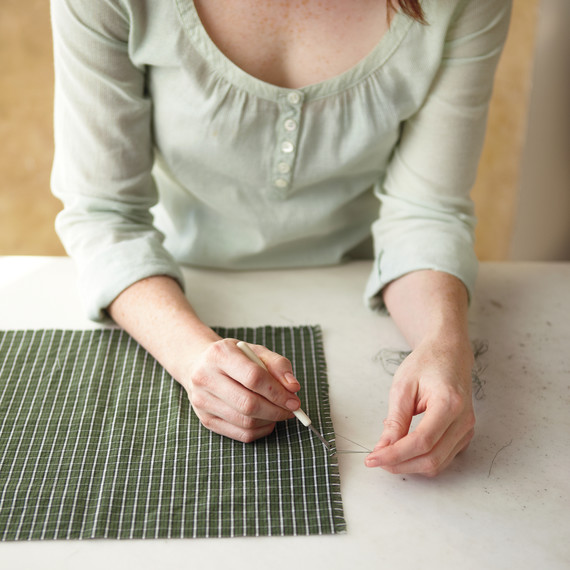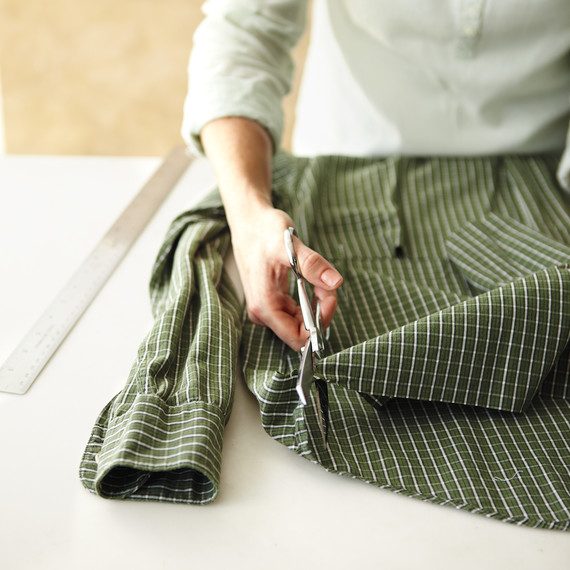

Photography by: Johnny Miller
Have you noticed the words “bespoke” and “bespoken” popping up a lot?
What originated in London’s 17th-century tailoring trade — when a man was measured for a suit and fabric was set aside for it — is now a word used to reference furniture, real estate, and more.
To be authentic, bespoken products are custom-created and generally exquisite. Customers know where they’re made and who is making them. They feature detailed craftsmanship that involves hours of labor. Extreme care is taken with every fiber that gets twisted into a carpet and every stitch that is sewn into a quilt. And, yes, bespoken products are expensive.
That got me thinking more about the bespoken industry. America’s farm-to-table craze is similar. Fans of bespoken goods like to know where our stuff is coming from, and that isn’t just true about our food. We appreciate the region from which our granite was carved and want to know whether our floors are made from sustainable wood. We care about where our place mats were woven and where the cotton for making our towels was grown. Fair trade — which speaks to responsible trading conditions and sustainability — is a term that gets our attention.
“People have a desire to know the story behind the things they buy,” explains Meg Noonan, who wrote “The Coat Route: Craft, Luxury, and Obsession on the Trail of a $50,000 Coat.” “Craftsmanship almost always comes with a good story — and it is often one that makes us feel good. Maybe it’s also a reaction to being bombarded with technology. We respond to things that are being done in a low-tech, old-fashioned way. It’s very refreshing.”

Photography by: Johnny Miller
Brooklyn-based interior designer Dennis McAvena sees a growing trend of millennials who want pertinent information about their products, such as where they are made and what they are made of. “This will be a generation whose expectations will be more specific regarding their homes,” McAvena suggests.
High-end buyers are already asking where their silk is from, McAvena tells me. And he recently took a client to see where a Brooklyn furniture maker will create the client’s $15,000 desk.
McAvena says more buyers will be willing to spend what it takes to get bespoken products in the future. “Younger generations will pay anything for locally grown wine and food and even clothes,” he says. “They will take the concept and transfer it into design.”
Perhaps we can even expect a trickle-down effect that may bring smaller bespoken products. “Knowing that my gloves or chair or coffee mug or whatever came from a nice, clean place and was made with dignity and caring makes me feel good about my purchase,” says Noonan.
During an era in which toxic paints and tainted foods are all too common, maybe this growing bespoken trend will offer comfort to all of us.
Want to get a custom piece made, but don’t want to spend your life savings? Here’s how to find a good upholsterer or seamstress for thrifty — but exquisitely unique — furniture and fashions:
For upholstery:
- Call a carpet and upholstery cleaner and ask if they have recommendations for reasonably priced upholsterers.
- Visit a fabric shop that specializes in upholstering fabrics and ask for recommendations.
For fashions:
- Ask your dry cleaner for names of seamstresses that the company uses when doing alterations.
- Retailers such as Macy’s, J.Crew, and Banana Republic generally use good seamstresses to make alterations. Ask a sales clerk at one of those stores if they can make a referral.
Note: If you use a skilled craftsperson for frequent projects, he or she may be willing to negotiate better prices.
SOURCE:http://www.marthastewart.com/1092188/history-of-bespoke